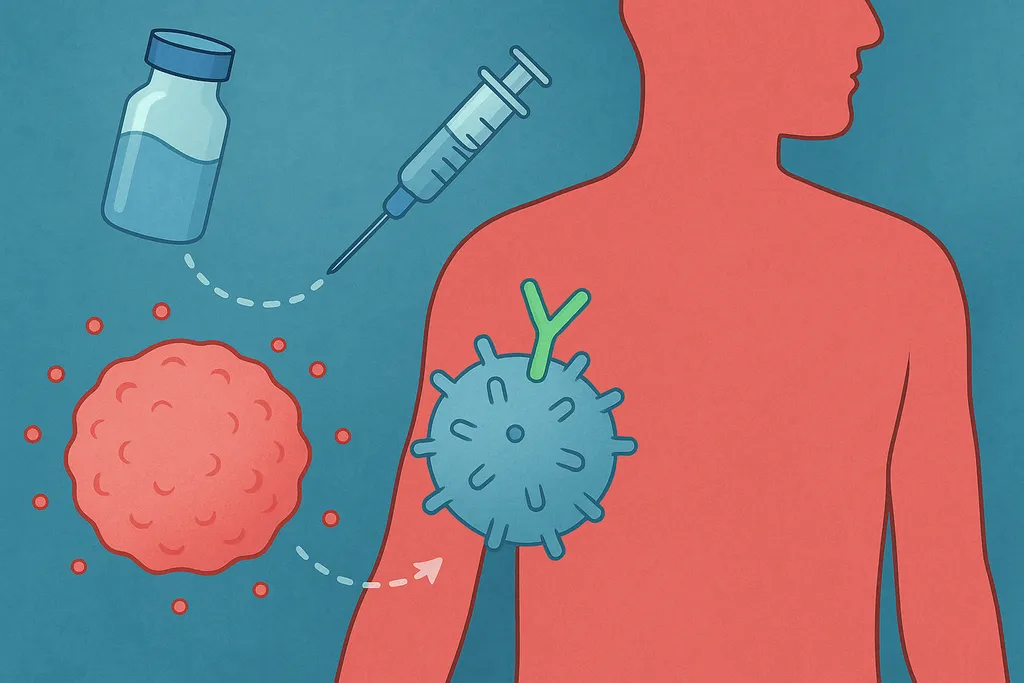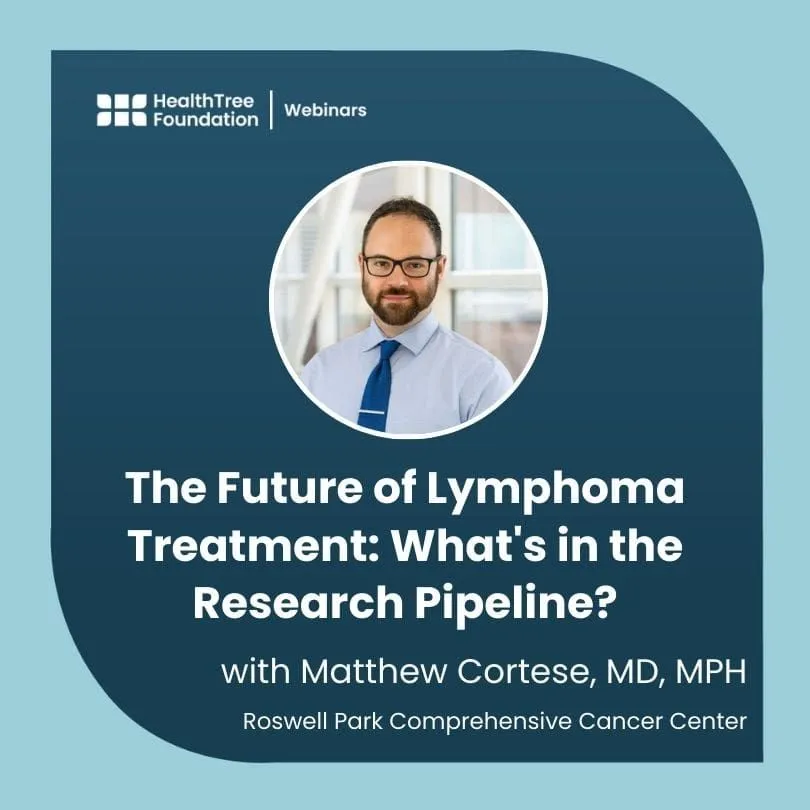Living Beyond DLBCL: Minimizing Cardiovascular Risks

Diffuse large B-cell lymphoma (DLBCL) is the most common type of non-Hodgkin lymphoma. While effective treatments like chemotherapy have increased survival rates, some can have long-term side effects, including cardiovascular complications.
This article explores the link between DLBCL treatment and heart problems, focusing on the most common drugs, associated symptoms, and potential complications. We'll also provide recommendations for DLBCL patients and caregivers to help minimize cardiovascular risks.
DLBCL Treatment and Heart Damage
The good news: many DLBCL patients achieve remission with treatment. However, some chemotherapy, particularly anthracyclines like doxorubicin, can damage heart muscle cells, leading to a condition called cardiotoxicity. This damage can be cumulative, even with moderate doses, and can weaken the heart and affect its normal function.
Symptoms to Watch For
Early detection of heart problems is crucial. Here are some common symptoms of cardiovascular complications to be aware of:
- Shortness of breath: This can occur at rest or during activity.
- Fatigue: Feeling unusually tired or lacking energy can be a sign of heart problems.
- Chest pain: Discomfort, tightness, or pressure in the chest can indicate heart issues.
- Palpitations: Feeling like your heart is racing, fluttering, or skipping beats.
- Swelling in your ankles or feet: This can be caused by fluid buildup due to heart problems.
Understanding Complications
Cardiovascular complications associated with DLBCL treatment can range from mild to severe and ultimately lead to heart failure. Some of the most reported complications include:
- Changes in blood pressure: Chemotherapy can sometimes lead to high blood pressure (hypertension) or low blood pressure (hypotension). These changes can affect blood flow to vital organs and require monitoring and management by your doctor.
- Arrhythmias: These are irregular heartbeats that can be uncomfortable and potentially dangerous.
- Pericardial effusion: This is a buildup of fluid around the heart, which can restrict its function.
- Cardiomyopathy: This is a general term for diseases that affect the heart muscle, weakening its ability to pump blood. There are different types of cardiomyopathy.
- Valve disease: Damage to heart valves from chemotherapy can cause them to leak or narrow, affecting blood flow through the heart. Symptoms may vary depending on the specific valve affected.
Recommendations for DLBCL Patients and Caregivers
During and after DLBCL treatment, it is crucial to maintain open communication with your doctor. This will ensure that any potential issues can be identified early on and addressed. Here's what you can do to minimize cardiovascular risks:
- Baseline heart evaluation: Before starting treatment, your doctor will likely recommend an echocardiogram, a painless ultrasound that assesses heart function.
- Monitoring during treatment: Regular monitoring with echocardiograms can help detect early signs of cardiotoxicity. Early detection allows for prompt intervention to minimize long-term damage.
- Treatment options: If cardiotoxicity is a concern or you have a history of heart disease, your doctor may adjust chemotherapy doses or consider alternative treatments with a lower risk of heart damage.
- Lifestyle modifications: Maintaining a healthy lifestyle with a balanced diet, regular exercise, and stress management can significantly reduce the risk of heart disease.
- Open communication: Discuss any concerns or symptoms you experience with your doctor promptly.
Regular monitoring with echocardiograms is crucial. If your echocardiogram results show any abnormalities, your doctor may recommend consulting with a cardiologist or a cardio-oncologist for a more specialized assessment and personalized management plan for your heart health.
Living Well After DLBCL Treatment
While some DLBCL treatments can increase the risk of heart problems, early detection, and proactive management strategies play a significant role in minimizing these risks. By working closely with your doctor and adopting a heart-healthy lifestyle, you can significantly improve your long-term health and well-being after DLBCL treatment.
If you want to learn more about navigating your health living with DLBCL and latest treatment advances, make sure to check out our Events Page and join us in our next webinar, CAR T-Cell Therapy Advances in Large B-Cell Lymphoma.
Sources:
Diffuse large B-cell lymphoma (DLBCL) is the most common type of non-Hodgkin lymphoma. While effective treatments like chemotherapy have increased survival rates, some can have long-term side effects, including cardiovascular complications.
This article explores the link between DLBCL treatment and heart problems, focusing on the most common drugs, associated symptoms, and potential complications. We'll also provide recommendations for DLBCL patients and caregivers to help minimize cardiovascular risks.
DLBCL Treatment and Heart Damage
The good news: many DLBCL patients achieve remission with treatment. However, some chemotherapy, particularly anthracyclines like doxorubicin, can damage heart muscle cells, leading to a condition called cardiotoxicity. This damage can be cumulative, even with moderate doses, and can weaken the heart and affect its normal function.
Symptoms to Watch For
Early detection of heart problems is crucial. Here are some common symptoms of cardiovascular complications to be aware of:
- Shortness of breath: This can occur at rest or during activity.
- Fatigue: Feeling unusually tired or lacking energy can be a sign of heart problems.
- Chest pain: Discomfort, tightness, or pressure in the chest can indicate heart issues.
- Palpitations: Feeling like your heart is racing, fluttering, or skipping beats.
- Swelling in your ankles or feet: This can be caused by fluid buildup due to heart problems.
Understanding Complications
Cardiovascular complications associated with DLBCL treatment can range from mild to severe and ultimately lead to heart failure. Some of the most reported complications include:
- Changes in blood pressure: Chemotherapy can sometimes lead to high blood pressure (hypertension) or low blood pressure (hypotension). These changes can affect blood flow to vital organs and require monitoring and management by your doctor.
- Arrhythmias: These are irregular heartbeats that can be uncomfortable and potentially dangerous.
- Pericardial effusion: This is a buildup of fluid around the heart, which can restrict its function.
- Cardiomyopathy: This is a general term for diseases that affect the heart muscle, weakening its ability to pump blood. There are different types of cardiomyopathy.
- Valve disease: Damage to heart valves from chemotherapy can cause them to leak or narrow, affecting blood flow through the heart. Symptoms may vary depending on the specific valve affected.
Recommendations for DLBCL Patients and Caregivers
During and after DLBCL treatment, it is crucial to maintain open communication with your doctor. This will ensure that any potential issues can be identified early on and addressed. Here's what you can do to minimize cardiovascular risks:
- Baseline heart evaluation: Before starting treatment, your doctor will likely recommend an echocardiogram, a painless ultrasound that assesses heart function.
- Monitoring during treatment: Regular monitoring with echocardiograms can help detect early signs of cardiotoxicity. Early detection allows for prompt intervention to minimize long-term damage.
- Treatment options: If cardiotoxicity is a concern or you have a history of heart disease, your doctor may adjust chemotherapy doses or consider alternative treatments with a lower risk of heart damage.
- Lifestyle modifications: Maintaining a healthy lifestyle with a balanced diet, regular exercise, and stress management can significantly reduce the risk of heart disease.
- Open communication: Discuss any concerns or symptoms you experience with your doctor promptly.
Regular monitoring with echocardiograms is crucial. If your echocardiogram results show any abnormalities, your doctor may recommend consulting with a cardiologist or a cardio-oncologist for a more specialized assessment and personalized management plan for your heart health.
Living Well After DLBCL Treatment
While some DLBCL treatments can increase the risk of heart problems, early detection, and proactive management strategies play a significant role in minimizing these risks. By working closely with your doctor and adopting a heart-healthy lifestyle, you can significantly improve your long-term health and well-being after DLBCL treatment.
If you want to learn more about navigating your health living with DLBCL and latest treatment advances, make sure to check out our Events Page and join us in our next webinar, CAR T-Cell Therapy Advances in Large B-Cell Lymphoma.
Sources:

about the author
Lisa Foster
Lisa Foster is a mom of 3 daughters and 1 perfect grandchild, a puzzle lover, writer and HealthTree advocate. She believes in the mission of the foundation and the team that builds it forward. She calls Houston, Texas home.
More on Navigating Your Health
Get the Latest Large B Cell Lymphoma Updates, Delivered to You.
By subscribing to the HealthTree newsletter, you'll receive the latest research, treatment updates, and expert insights to help you navigate your health.








